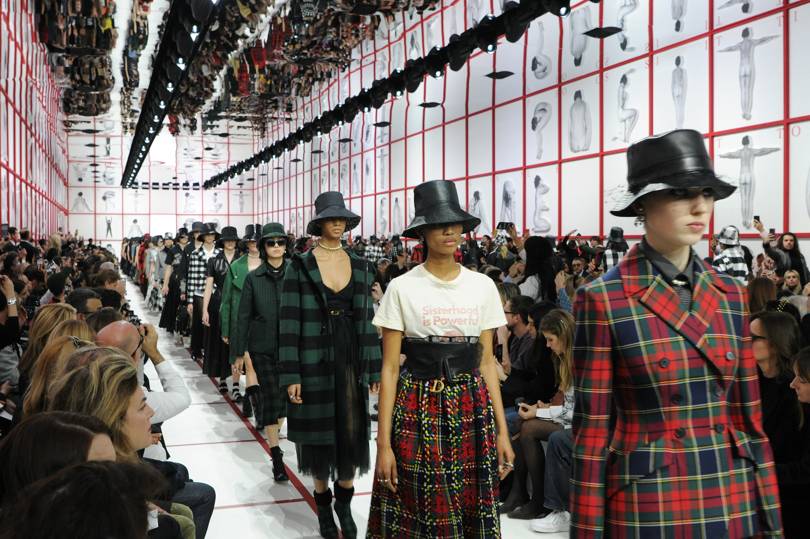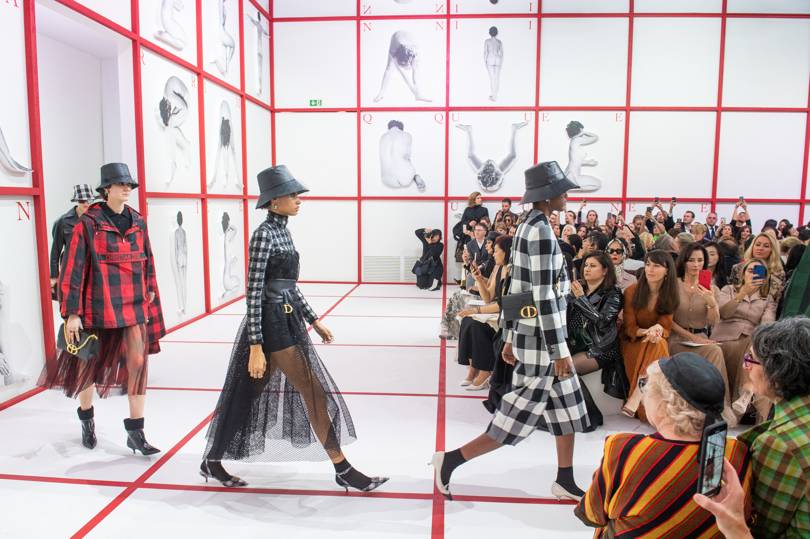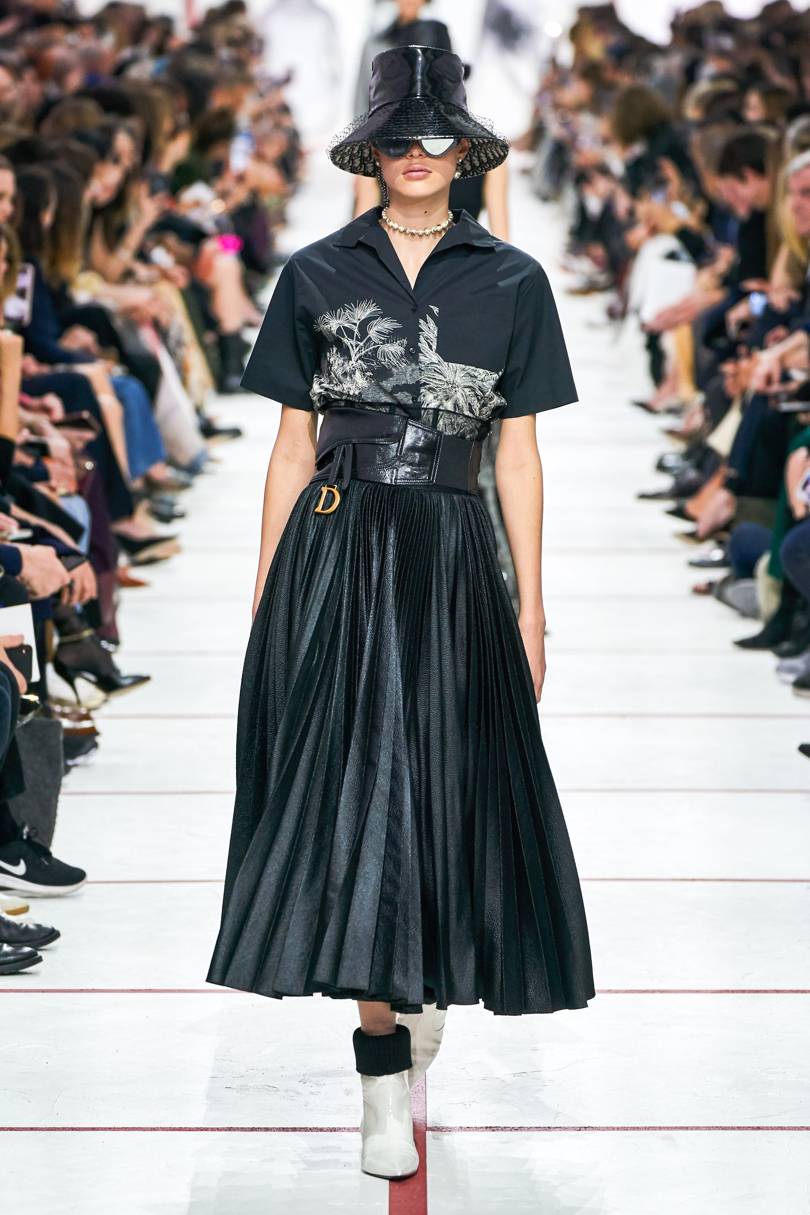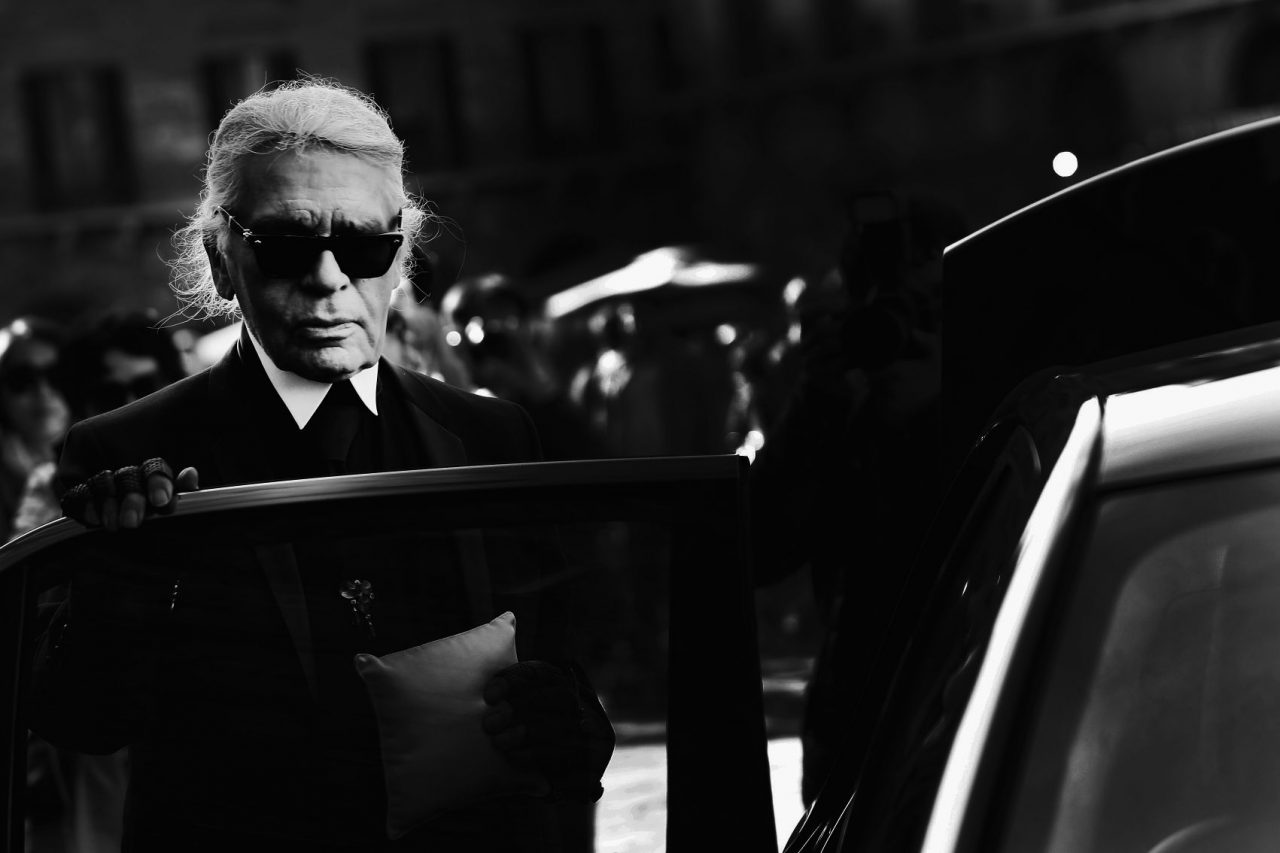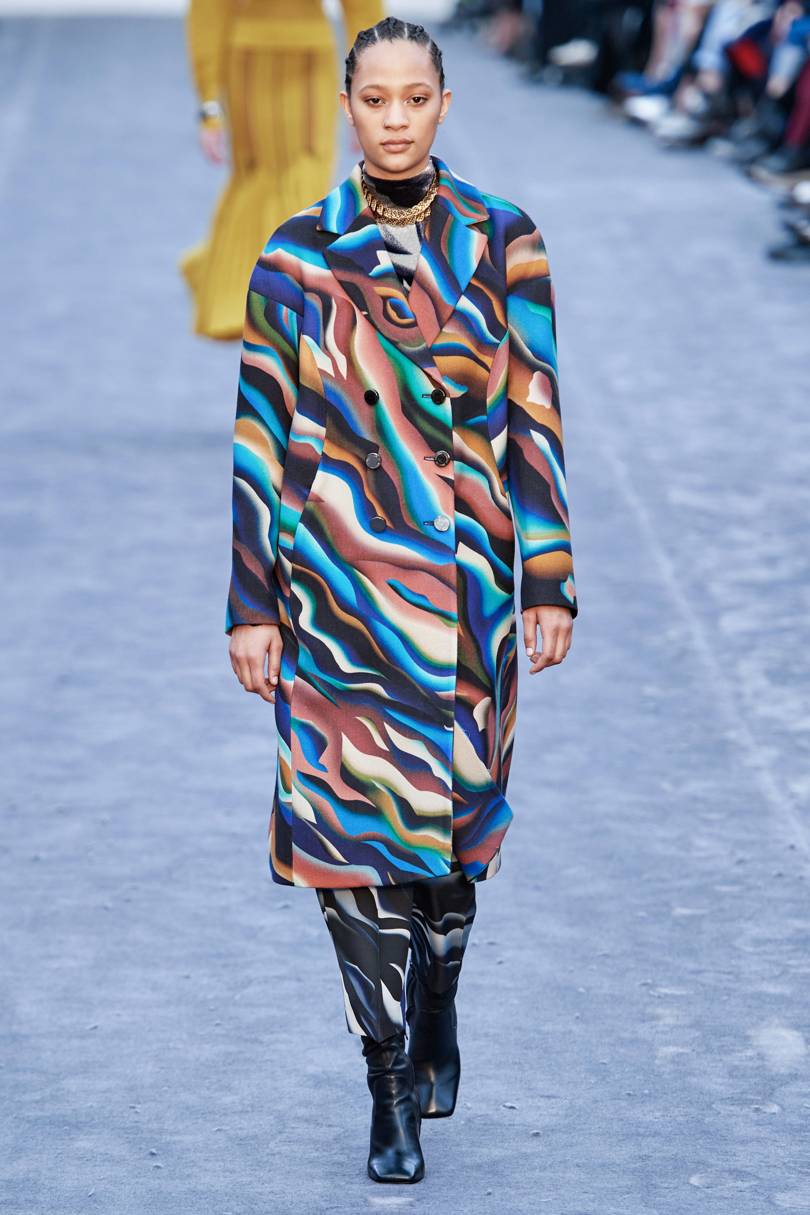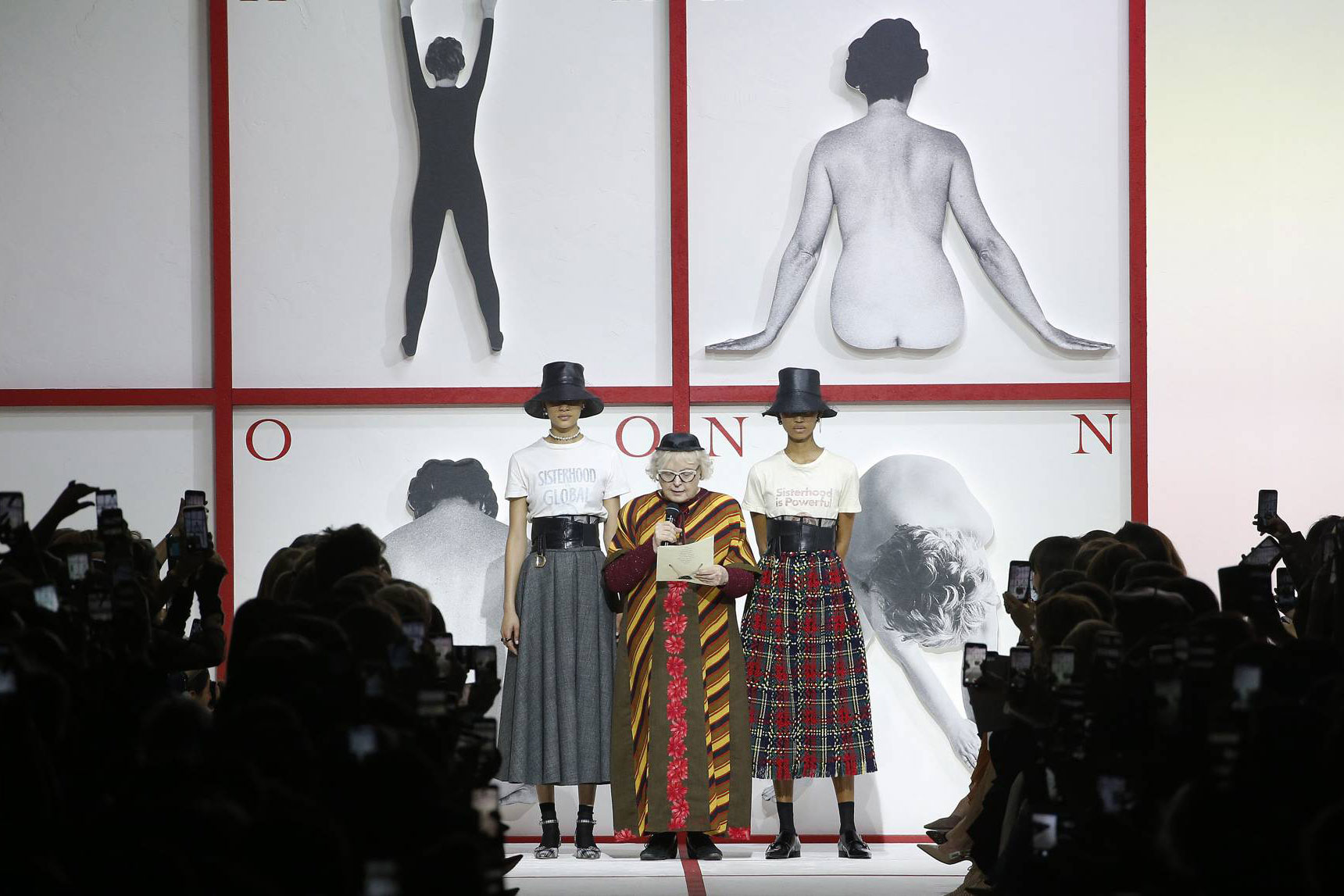
Behind the trim figure with a tiny waist and spreading skirt was a princess with a restless heart. The Dior autumn/winter 2019 show was an ode to England’s Princess Margaret, the sister of Queen Elizabeth and a beautiful but tragic royal whose passionate loves included not only unsuitable partners but also her 21st birthday Christian Dior dress as well.
The finale at Christian Dior A/W19. Photo: GoRunway
A photo by Cecil Beaton of the Princess in that gown is at the forefront of the current show an exhibition at the Victoria & Albert Museum in London until 14 July.
View this post on Instagram
“It’s another way to speak about the 1950s – the subculture was very different at the time,” said Maria Grazia Chiuri, referring to Mr Dior’s glory years, and explaining the plaid-goes-punk section of her show.
“Young girls in the 1950s give me another vision. They were really rebellious in some ways, including Princess Margaret,” said the designer. “She was a rebel in the Royal Family, when buying Dior was a scandal.”
Now, of course, Meghan, the Duchess of Sussex has Dior on her long designer list. And aiming at a range of young clients is all in Maria Grazia’s philosophy, not least with her daughter, Rachele Regini, at her side.
View this post on Instagram
But just as there were layers of ultra-light fabrics – perhaps as the bottom half of a curvy, fitted jacket – so there were different contributions to this season’s Dior story.
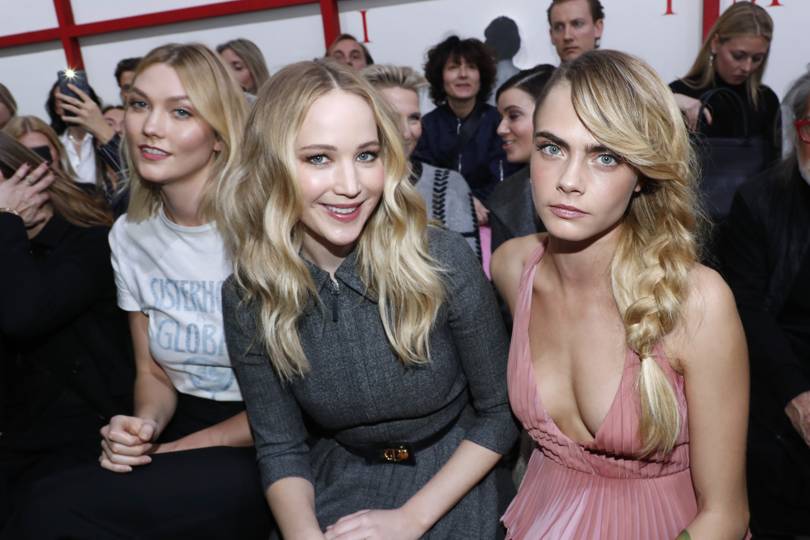
Karlie Kloss - wearing Chuiri's 'Sisterhood Is Global' slogan T-shirt taken from the book by feminist author Robin Morgan - Jennifer Lawrence and Cara Delevingne front row at Dior. Photo: Getty Images
First out, was Italian feminist and conceptual artist Tomaso Binga, who spoke to an audience seated beside the catwalk, where the tent walls were covered in images of her younger self, folding her naked body to form the letters of the alphabet. You have to admire Maria Grazia Chiuri for reiterating each season her strong views on powerful women.
Switch to the runway and the story was based on what was happening on the London streets in the Princess Margaret years. Plaid became a uniting theme between palace and sidewalk – the one where rebellious teenagers (before that word was even commonly used) paraded on the streets in an early version of punk.
The Dior autumn/winter 2019 show was an ode to England’s Princess Margaret. Photo: GoRunway
The theme of a burgeoning subculture brought in a reference to the black leather jacket that the young Yves Saint Laurent showed when he became designer at Dior. He got nothing but disdain for an item that is still relevant to fashion more than half a century on.
It was to Maria Grazia’s credit that all these themes and ideas came together smoothly. Almost too much so, for where there should have been applause at the mix of delicacy and strength in her work, it all came down the runway in a continuous flow, until the intricacy of the evening dresses took over.
View this post on Instagram
The overall effect was therefore quite flat, which seems a cruel comment when referring to such carefully thought-out and intensive creations.
But Maria Grazia insisted that she did not think it was up to her, or to any of the previous designers who took on Christian Dior’s role, to push themselves forward.
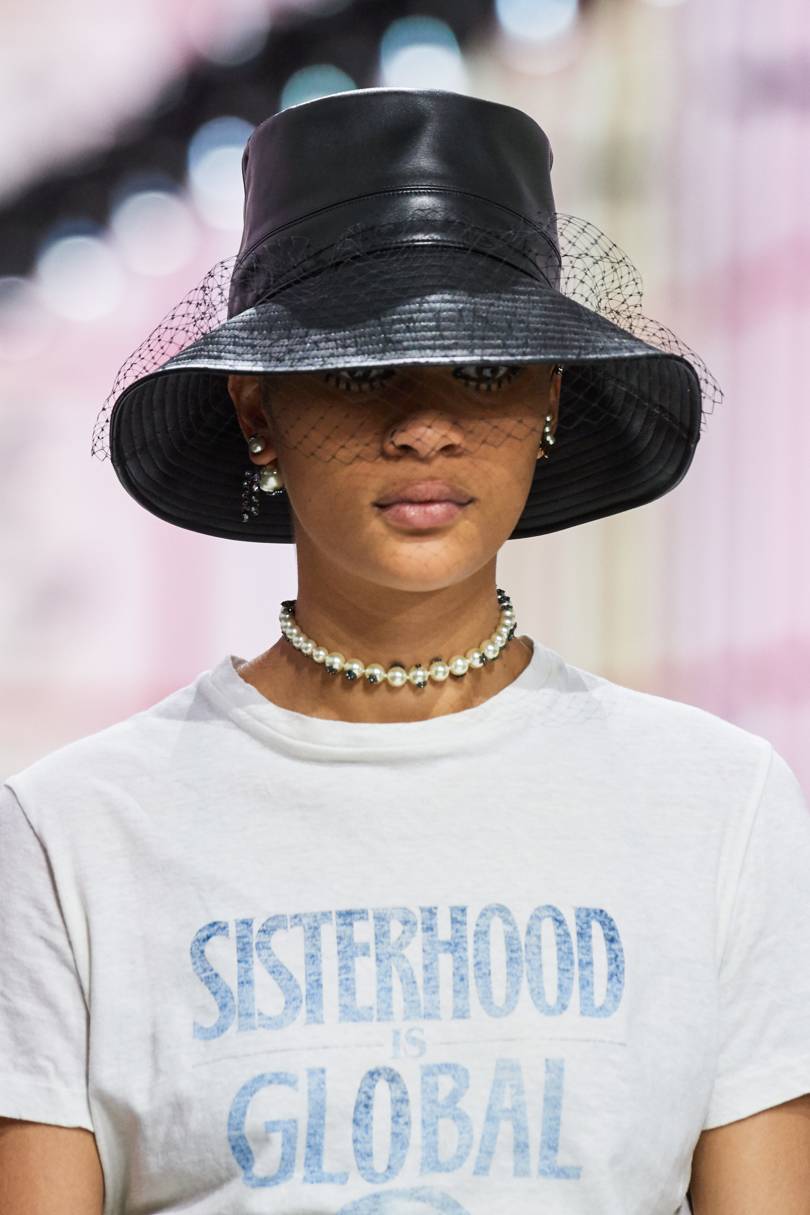
'Sisterhood Is Global' slogan T-shirt with a hat designed by Dior inhouse milliner, Stephen Jones. Photo: GoRunway
“We are the directors, and it’s so important for a company like Dior that our code is very strong. But, at the same time, it is respectful,” she said, referring to areas of the London exhibition where the designers during different periods could all be seen as part of the Christian Dior universe.
View this post on Instagram
In Chiuri’s collection, viewers were taken methodically from one fashionable group to another, as small top hats by Stephen Jones united all the looks. With skiing trousers or even a full short skirt, the collection seemed to speak more clearly to young customers.
Inevitably, the conversation with Maria Grazia included her memories of working with Karl Lagerfeld during her years at Fendi.
View this post on Instagram
“He’s an incredible part of fashion history,” she said. “I start to think about when I was with Fendi, about 1986 I think, and Karl would come when I was the last assistant of the last assistant in accessories. I was put there to wait for Karl, to support all the Fendi family. It was another era. But when I met him again two years ago at the Louis Vuitton prize, he was so much fun because he’d say, ‘Hurry up. Maria Grazia and I have couture, and we are busy.’”
Maybe one thing that the late superstar designer and Maria Grazia had in common was a belief that collections were created to sell clothes. With a gleam of pleasure in her eye, the Dior creative director told me that she’d noticed that the berets she made with Stephen Jones were selling, and insisted that they be presented in the shops for €600 in a smart box. So far, 6,000 customers – quite a little female army – have bought them.
Editor
Suzy Menkes